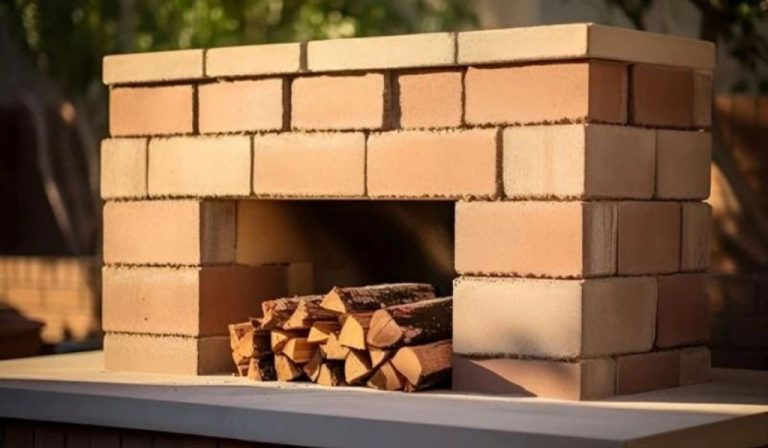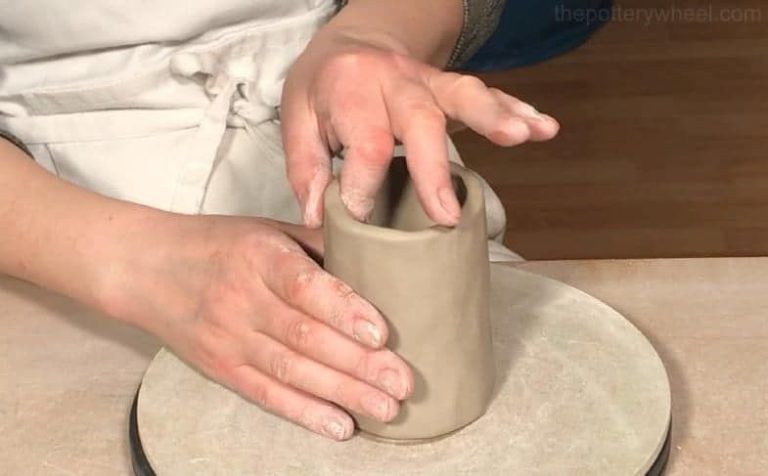Is It Hard To Sculpt With Clay?
Clay sculpting is an art form that allows artists to bring their creative visions to life in three-dimensional form. From small desktop sculptures to monumental public artworks, sculpting with clay is an accessible and versatile medium. But is it actually difficult to sculpt with clay? This article will explore the challenges and rewards of sculpting with this classic medium.
We’ll provide an overview of clay types, essential tools and techniques, difficulty level, and tips for both beginners and more advanced sculptors. You’ll learn what makes clay a unique art material, examine some of the greatest clay sculptures through history, and gain insight into how you can start sculpting your own clay creations.
Background on Clay Sculpting
Clay sculpting has been around for thousands of years, with some of the earliest known clay sculptures dating back to 24,000 BCE. Clay is one of the most popular and versatile sculpting materials because of its soft, pliable texture that allows artists to shape it into endless forms.
There are several types of clay used for sculpting, including earthenware, stoneware, porcelain, and polymer clay. Earthenware is lower-fired clay that is porous and fragile when fired. Stoneware clay is denser and more durable when fired at high temperatures. Porcelain is a fine white clay that becomes glass-like when fired. Polymer clay is an oil-based modeling compound that hardens when baked in a regular oven.
Clay sculpting techniques involve shaping, molding, carving, and smoothing the clay to create 3D forms. Modeling is an additive technique where clay is rolled, pressed, coiled, or slabs are joined. Carving is a subtractive technique where clay is shaped by removing material. Clay can also be poured into molds and then sculpted when partially set. Common sculpting tools include wire loops, ribs, wooden sticks, files, and sculpting knives.
Required Supplies
Clay sculpting requires a few key supplies to get started. The most important is having the right type of clay. There are generally two categories of clay – oil-based and water-based. Oil-based clays like plasticine are softer and easier to shape for beginners. However, the sculptures cannot be hardened, so they remain malleable. Water-based clays can be fired in a kiln to harden them into a permanent sculpture. Polymer clay is popular for small figures and jewelry making because it hardens in a home oven.
Having the proper sculpting tools is also essential. Metal loops, ribs, wooden sticks, wire tools, and pottery wheels assist in manipulating and shaping the clay. Sculptors may use knives, cutters, rubber tips, and modeling tools to add fine details and textures. Soft bristle brushes help smooth surfaces.
The work surface is key for sculpting clay figures and structures. Tables or countertops should be sturdy and made of a material that is easy to clean such as wood, glass, or acrylic. Cover the surface with cardboard, canvas, or plastic sheets while working to prevent sticking. Using a turntable allows rotating a sculpture 360 degrees to reach all sides.
Sculpting Techniques
There are two main types of sculpting techniques when working with clay: additive and subtractive. With additive sculpting, the artist builds up the form by adding more and more clay. This involves rolling clay into coils, balls, and slabs, then attaching them together. With subtractive sculpting, the artist starts with a solid block of clay and removes excess material to reveal the final form. This is done using knives, loop tools, and other carving implements to cut away clay.
Using an armature is an important technique in sculpting. An armature is an internal framework made of wire, wood, or other materials that provides structure and support to the clay. For large or complex sculptures, an armature is essential to prevent sagging or collapse. The armature often mimics the general shape of the intended sculpture and clay is built up around it. The armature can be fully concealed or partly revealed when sculpting is complete.
Achieving different textures is another key sculpting technique. Clay can be smoothed, roughened, etched, stamped, or carved to create diverse organic and manmade textures. Sculptors use various tools and implements like serrated ribs, loops, wooden modeling tools, palette knives, and brushes to imprint patterns and textures into the clay surface. Realistic textures like stone, bark, feathers, scales, etc. can be replicated.
Difficulty Level
Clay sculpting can seem daunting to beginners, but becomes easier with practice. The main challenges at first are learning to work the clay without overworking it, and achieving clean lines and smooth surfaces. As a pliable medium, clay requires finesse to mold it into intricate shapes without leaving fingerprints or distorting details. Novices tend to make pieces that are blocky, malformed, or collapse under their own weight. However, consistency and care in handling the clay will lead to noticeable improvements over just a few sessions.
With time, beginners can advance to more complex sculpting techniques like carving texture, making hollow forms, and sculpting delicate protrusions without compromise. Mastering armature building allows for larger, freestanding sculptures. Those seeking greater realism learn skills like smoothing seam lines, maintaining proportional anatomy, and replicating surface details accurately. Troubleshooting issues like cracking, crumbling, or drooping just takes patience and an analytical eye to identify causes and solutions. Overall, clay sculpting can be as easy or difficult as the artist wishes to make it. With practice, what initially seemed impossible will become second nature.
Benefits of Clay Sculpting
Clay sculpting provides many benefits beyond creating beautiful works of art. It is an excellent creative outlet that allows for free expression, can be relaxing and reduce stress, and helps develop fine motor skills.
Working with clay is a great way to tap into your creativity. It provides a tactile, hands-on medium to bring your ideas to life. You can sculpt anything you can imagine without the constraints of more technical art forms. Being able to freely experiment and express yourself through your artwork is extremely rewarding.
The therapeutic nature of molding and manipulating clay can also help reduce stress and anxiety. Similar to Play-Doh for adults, interacting with clay activates the sensory aspects of the brain in a calming, mindful way. The physicality of the process produces a satisfaction unlike most other mediums.
Clay sculpting requires using your hands to shape, blend, carve, and refine the clay. These small, precise finger movements help improve dexterity and strength in your hands and fingers. As you gain proficiency, your motor skills will become more controlled and nimble.
Tips for Beginners
Sculpting with clay can seem daunting for beginners, but starting simple and following some basic guidelines can help make the process more approachable.
When first starting out, focus on simple projects like basic shapes and small figures rather than jumping into complex sculptures. Simple projects allow you to practice fundamental techniques without becoming overwhelmed.
Proper posture is also important when sculpting. Sit upright with your back straight, and avoid hunching over your work. This will help prevent strain and fatigue.
Be sure to keep your sculpting tools and hands moist with water when working with clay. Letting the clay dry out makes it difficult to manipulate. A spray bottle of water is useful for maintaining moisture.
For first-timers, oven-bake or polymer clay is often easier to work with than air-dry clays. Oven-bake clay doesn’t dry out as quickly, allowing more time for shaping and detailing your sculpture before baking.
Advanced Techniques
Once you have honed your basic sculpting skills, you can move on to more advanced techniques that allow you to create incredibly realistic and detailed sculptures.
Sculpting Portraits
Sculpting lifelike portraits of people and animals requires careful observation and an ability to accurately recreate the proportions and details of your subject. Pay close attention to the unique contours of the face and look at reference photos to capture a likeness.
Working Large-Scale
Creating large sculptures brings its own set of challenges. You need an armature or other support structure to hold the weight of the clay. Work in sections and make sure to allow time for drying between sessions. Consider the final placement of your sculpture and how you will transport and install it.
Achieving Realism
Whether sculpting portraits, figures, or organic forms, realism requires patience and fine detailing. Use calipers, proportional dividers, and sighting techniques to perfectly capture proportions. Refine shapes with specialized sculpting tools. Recreate textures and surfaces through meticulous blending, stippling, and carving.
Incorporating Mixed Media
You can make your clay sculptures more dynamic by incorporating other materials like wood, metal, plastic, paper, and found objects. These mixed media elements can be fully integrated into the sculpture or applied as decals, texture, or accents. Take into account durability and weight when combining clay with other media.
Notable Clay Sculptures
Clay has been used as an artistic medium for sculpting for thousands of years. Here are some of the most famous and inspiring clay sculptures throughout history:
Famous Works Throughout History
The Venus of Dolní Věstonice, dating back to 29,000-25,000 BCE, is one of the oldest known ceramic artworks. This Venus figurine was discovered in the Czech Republic and exemplifies prehistoric art.
Ancient Greek sculptures like the iconic Venus de Milo statue and the Riace Bronzes dating to around 100 BCE showcase the masterful bronze and terracotta sculptures of antiquity.
The life-size Terracotta Army statues from around 200 BCE found in Xian, China represent the infantry soldiers, chariots, and horses of China’s first emperor’s massive mausoleum.
The 1,300 year old Great Buddha of Kamakura is a massive bronze statue in Japan that stands over 13 meters tall and weighs 93 tons.
Contemporary Masterpieces
Auguste Rodin’s The Thinker sculpture from 1902 is one of the most celebrated bronze and plaster statues from the modern era.
Les Bourgeois de Calais, completed in 1895 by Auguste Rodin, depicts six heroic townspeople as life-size clay sculptures.
Contemporary artists like Jeff Koons continue to use clay as a medium, seen in his iconic Balloon Dog sculptures.
Clay sculptures like those by potter Viola Frey realistically depict larger-than-life human figures in intricate detail.
Conclusion
In summary, sculpting with clay can seem daunting at first, but with the right supplies, techniques, and practice, it is an accessible and gratifying art form for all levels. While it takes time to master, the tactile experience and creative satisfaction make it worthwhile. With an understanding of the fundamentals, even beginners can start crafting beautiful works of art from this dynamic medium.
Clay’s responsive nature enables imagination to take tangible form. As we’ve explored, its versatility and forgiveness empower artists to bring ideas to life. For both novice and expert sculptors, clay remains a vital material that fuels creativity and innovation. Though it presents challenges, the rewards of sculpting in this medium make the effort truly fulfilling.



